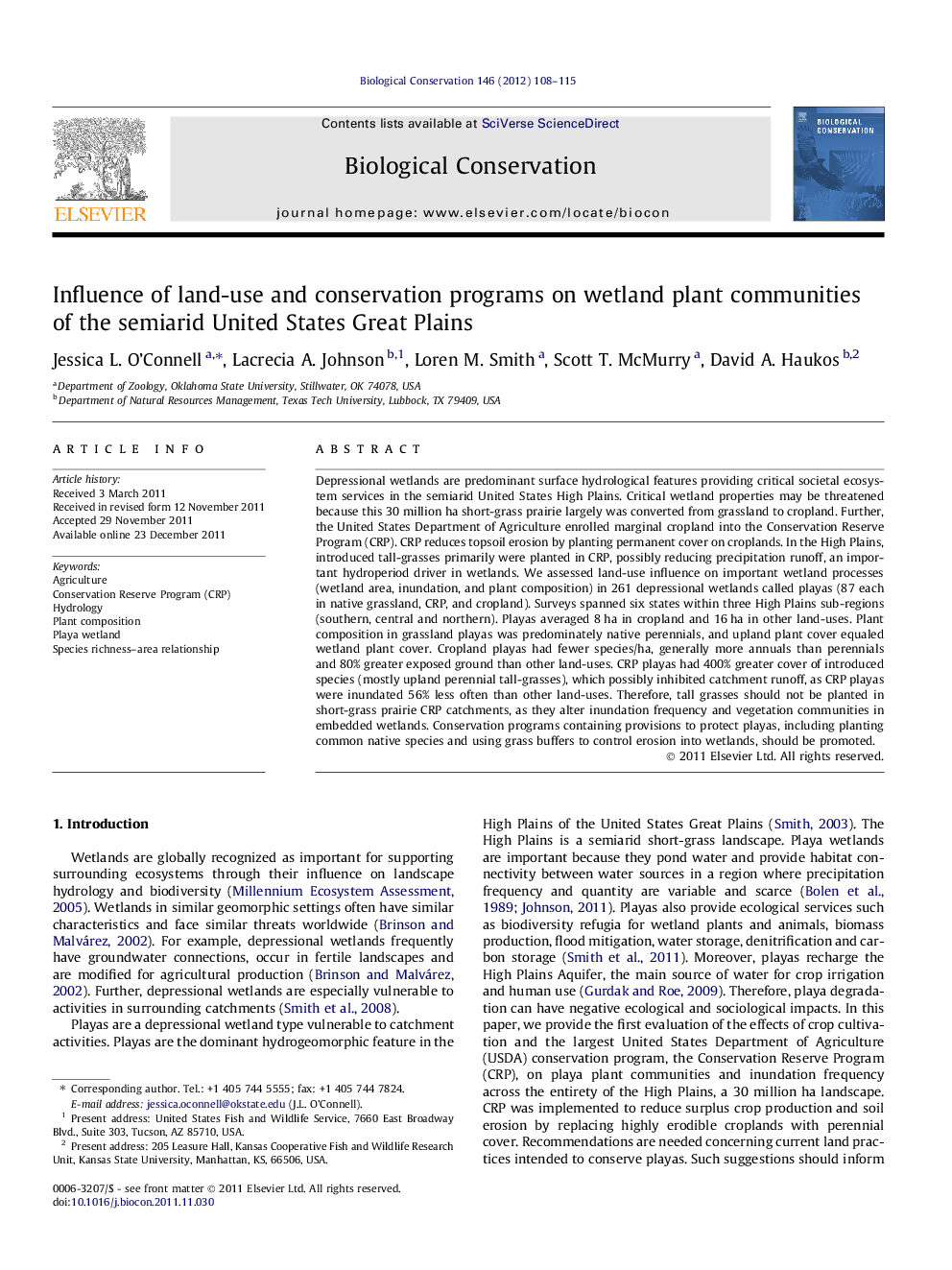| Article ID | Journal | Published Year | Pages | File Type |
|---|---|---|---|---|
| 4385471 | Biological Conservation | 2012 | 8 Pages |
Depressional wetlands are predominant surface hydrological features providing critical societal ecosystem services in the semiarid United States High Plains. Critical wetland properties may be threatened because this 30 million ha short-grass prairie largely was converted from grassland to cropland. Further, the United States Department of Agriculture enrolled marginal cropland into the Conservation Reserve Program (CRP). CRP reduces topsoil erosion by planting permanent cover on croplands. In the High Plains, introduced tall-grasses primarily were planted in CRP, possibly reducing precipitation runoff, an important hydroperiod driver in wetlands. We assessed land-use influence on important wetland processes (wetland area, inundation, and plant composition) in 261 depressional wetlands called playas (87 each in native grassland, CRP, and cropland). Surveys spanned six states within three High Plains sub-regions (southern, central and northern). Playas averaged 8 ha in cropland and 16 ha in other land-uses. Plant composition in grassland playas was predominately native perennials, and upland plant cover equaled wetland plant cover. Cropland playas had fewer species/ha, generally more annuals than perennials and 80% greater exposed ground than other land-uses. CRP playas had 400% greater cover of introduced species (mostly upland perennial tall-grasses), which possibly inhibited catchment runoff, as CRP playas were inundated 56% less often than other land-uses. Therefore, tall grasses should not be planted in short-grass prairie CRP catchments, as they alter inundation frequency and vegetation communities in embedded wetlands. Conservation programs containing provisions to protect playas, including planting common native species and using grass buffers to control erosion into wetlands, should be promoted.
► The US Department of Agriculture funds Conservation Reserve Programs (CRPs) on former cropland. ► Cropland and CRP reduced ponded water over a 30 million ha semi-arid prairie region. ► Croplands and CRP negatively altered wetland plant communities. ► CRP, a multi-million dollar effort, should limit revegetation to plants adapted to local climates.
